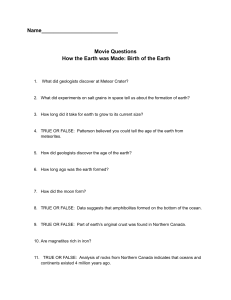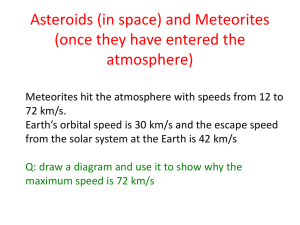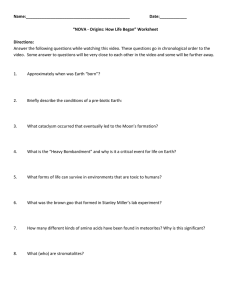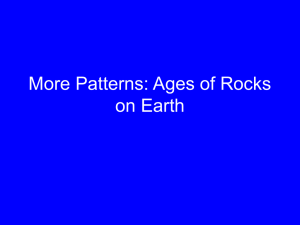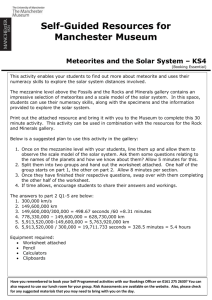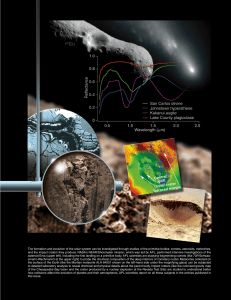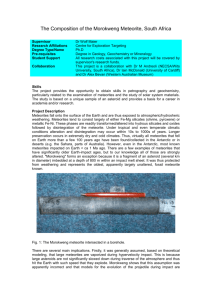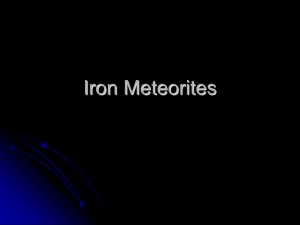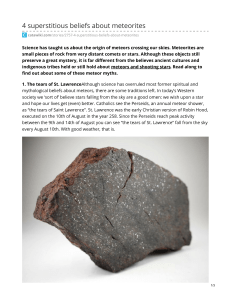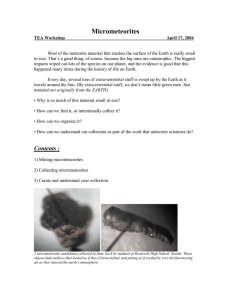In class today we have an assortment of real meteorites... based on their overall properties (shape, internal appearance, external appearance,... Space Rocks from Space
advertisement
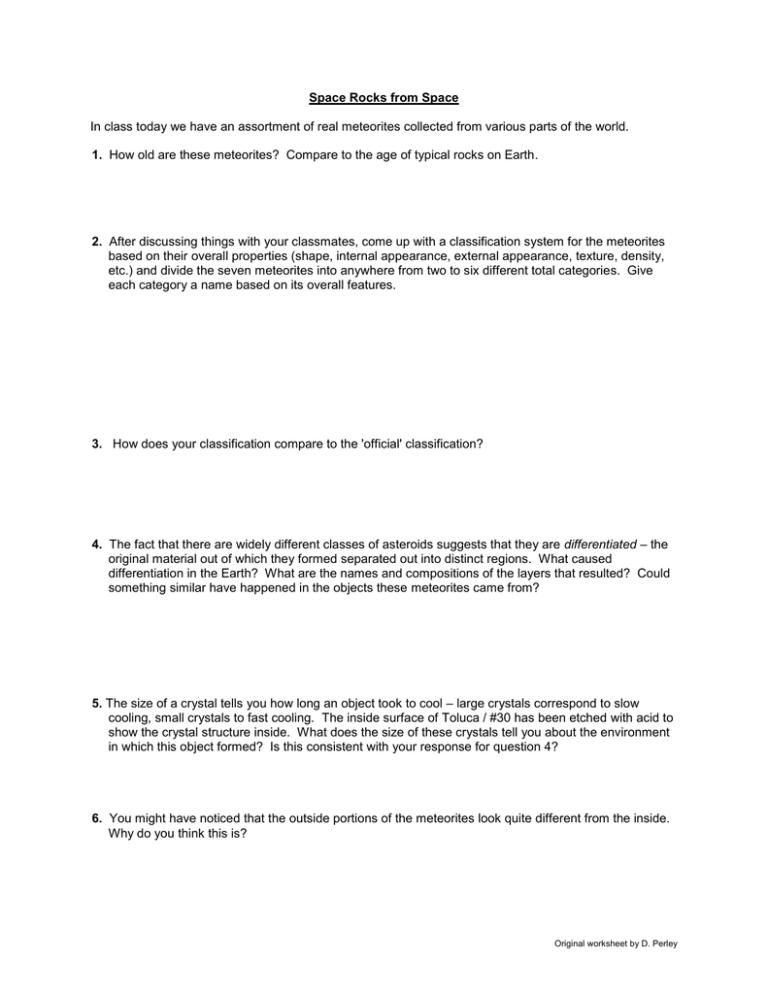
Space Rocks from Space In class today we have an assortment of real meteorites collected from various parts of the world. 1. How old are these meteorites? Compare to the age of typical rocks on Earth. 2. After discussing things with your classmates, come up with a classification system for the meteorites based on their overall properties (shape, internal appearance, external appearance, texture, density, etc.) and divide the seven meteorites into anywhere from two to six different total categories. Give each category a name based on its overall features. 3. How does your classification compare to the 'official' classification? 4. The fact that there are widely different classes of asteroids suggests that they are differentiated – the original material out of which they formed separated out into distinct regions. What caused differentiation in the Earth? What are the names and compositions of the layers that resulted? Could something similar have happened in the objects these meteorites came from? 5. The size of a crystal tells you how long an object took to cool – large crystals correspond to slow cooling, small crystals to fast cooling. The inside surface of Toluca / #30 has been etched with acid to show the crystal structure inside. What does the size of these crystals tell you about the environment in which this object formed? Is this consistent with your response for question 4? 6. You might have noticed that the outside portions of the meteorites look quite different from the inside. Why do you think this is? Original worksheet by D. Perley
